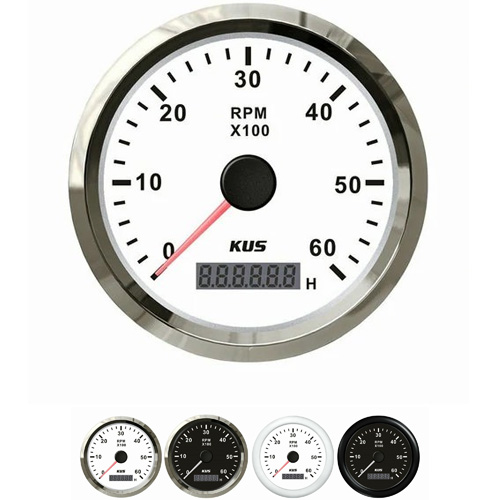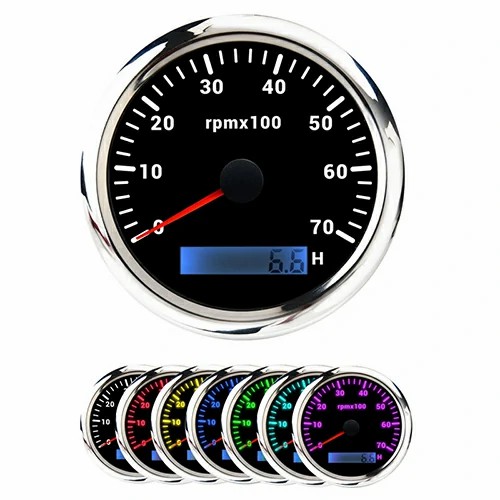tachometer not working properly
Because the flexible shaft may be twisted, bent, rubbed or lack of lubrication. If the pointer of the speedometer swings suddenly, it may be caused by the torsion of the flexible shaft. If the pointer swings back and forth, the problem may lie in the meter. The twisted flexible shaft curls and bounces straight in the shell, resulting in fast and slow transmission, causing the pointer to swing. When checking whether the flexible shaft is twisted, first remove the flexible shaft from the shell of the watch, then put it in a flat place, and then twist the shaft head with your fingers to rotate one end of the flexible shaft. If the flexible shaft turns slowly, it means that the shaft is not twisted in the shaft shell, but if the other end of the flexible shaft twitches and suddenly turns, it means that there is a twisted place in the shell. You can also use a new flexible shaft to compare the feeling of your hand.
If the flexible shaft is twisted, it must be replaced. Another method is to hold both ends of the flexible shaft with both hands. At this time, the flexible shaft must be bent. Then slowly twist both ends of the cable with your fingers. If the flexible shaft is twisted, there will be runout between the shaft and the shell. Carefully check the flexible shaft for friction or wear. If the flexible shaft rubs, it indicates that there is excessive bending or the shell is defective. If necessary, replace the flexible shaft and shell. Then, try to eliminate the factors causing excessive bending. Visually inspect the flexible shaft head to see if it is straight. The flexible shaft should be replaced if it is not hard.
The possible causes of other faults are as follows: pointer fluctuation: the flexible shaft or shell is damaged, and the main shaft bearing is worn or dirty; Excessive end clearance of magnetic shaft; Magnet or speed disc. Ash or oil; The speed disc is rusted on the spindle end; The main engine magnet shaft bearing is worn (the shaft side clearance shall not exceed 0.003m); Speed disc shaft bending; The stator position of the magnetic basin is incorrect; The first, second and third gears are worn. The pointer does not return to zero: the hairspring is broken; Not adjusted properly; The pointer is not installed properly; The front gem bearing is too tight or there is ash or butter inside.
Incorrect speed indication: the mechanism is dirty or full of butter; Not corrected properly; The pointer is out of balance. Note: when the flexible shaft of the speedometer rotates at a given speed, take the speedometer in your hand and turn it clockwise for several different positions to see the balance of the pointer. If the indicated speed changes, it means that the pointer or speed disc is unbalanced. The speed is incorrect, exceeding half of the scale; The hairspring touched; The magnetic basin stator is not concentric with the speed disc; The pointer cylinder is unbalanced.
Excessive noise: the shaft end clearance of the magnetic shaft is too large; Wear of main bearing; Gear wear, etc. Odometer does not work: the first gear is disengaged; The end clearance of the second gear is too large; The second or third gear is disengaged; Skew and wear; The idler gear is broken or does not move. Inaccurate odometer reading: the second or third worm gear is worn; The transmission drive gear is worn; Tire wear, size change. The speed control systems installed in various vehicles have different structures and control methods, but the work they need to complete is the same, that is, automatically adjust the speed to the speed set by the driver. Generally speaking, this speed will remain unchanged until the driver sets another speed, or presses the brake pedal, or the control system is cut off.
 English
English 



Get a Quote / Info